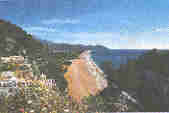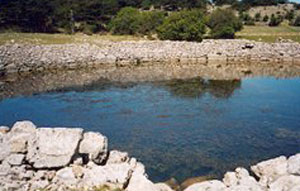|
Introduction
The extinction rates of species are the highest ever since the disappearance
of the last dinosaurs, about 60 million years ago. According to a UN study forecasts
that over the next 30 years 25% of mammals and 12% of the birds across the world
will become extinct.
Some scientists believe that several tens of thousands of tropical rain forest
species will disappear each year or will die in the near future due to the destruction
of forests (Naturopa, 1996).
Around 10 % of plant species in temperate regions and 11% of the world's 9000
bird species are threatened with extinction.
Biodiversity conservation is one of the most important elements of ICZM. Therefore,
the urgencies of ICZM given in the "Principles of ICZM" module under "Why ICZM?"-"Urgencies"
are applicable here, as well.
Threats to biodiversity
Biodiversity conservation The degradation and depletion of biological diversity may largely be
attributed to unprecedented pressure
that human beings exert on nature. Among the threats that human activities pose
to landscapes, ecosystems and species, it is possible to identify the following:
direct pressure
indirect pressure
These pressures are enforced by certain human activities such as:
A further increase in pressure is to be expected when regarding global tendencies:
Impacts on biodiversity
The previously mentioned threats damage or even destroy landscapes and
natural habitats, cause species to die out and reduce their genetic diversity.
Thus the species and the habitats become endangered.
The speed of technology development and environmental damage caused by human
beings is increasing. This means that the time remaining for animals to adapt
to new conditions before further changes occur is shortened. Even if modifications
in specie's behaviour, such as restricting their vital habitat or becoming nocturnal
rather than diurnal, enables them to adjust, they often do not have sufficient
time to adapt to the ensuing changes in other ways.
Solutions
Poor regional/spatial planning has aggravated the situation in many
areas. Better management plans can help to reduce the pessure exerted on biodiversity
by human activities.
|
Example: Conflicts between turtles & tourism on ÇIRALI
BEACH, Turkey
The region of Çirali, located on the Mediterranean Coast, west of Antalya
city. The region has a high archaeological and natural value. The antique ruins
of Olympos city and two nearby beaches (Tekirova and Cirali) attract hundreds
of thousands of foreign and local visitors.

Turtles in Turkey
Çirali beach is partly protected, since it has been defined as one
of the 17 most important sea turtle nesting sites in Turkey. Both of the two
mediterranean species of sea turtle are found in the area: the Loggerhead turtle
(Caretta caretta), and the endangered Green turtle (Chelonia mydas).
All sea turtles nest on sand beaches and often exclusively on those where they
were born themselves. From June to August the females climb up to the beach
at night to dig a hole less than 50cm in depth. About 100 soft-shelled eggs
are laid into the hole and covered with sand and then left to hatch for about
10 weeks.
Turkey holds the largest known number of Loggerhead and Green turtles in the
Mediterranean: Every year about 300-350 Green turtles come to the beach to lay
their eggs, but numbers are decreasing. Turtles in Turkey are under serious
threat from fisheries and a high level of nest predation.
Tourism in Turkey
However, the greatest danger emerges from both present and planned tourism,
which has become one of the main investment areas in Turkey over the past 20
years. In 1977 only 100,000 licenced beds were available to tourists but by
the turn of the century the capacity reached one million. About one third of
the 10 million people visiting Turkey annually, come to the Antalya region and
spend about $1000 per person. It is not surprising, that legal frameworks and
implementation of existing local legislation concerning construction, protection
and waste management, cannot keep up with such rapid development.
Threats imposed on turtles by tourism
- habitat conversion
Tekirova has been extensively built up by hotels and large tourism resorts
that stretch out to the beach. In Cirali Beach, many apartments and restaurants
have been constructed very closely to the beach in spite of the protection
placed on the area. Further illegal sand extraction contributes to the deterioration
of the nesting sites.
- intrusion into habitats
Tourists destroy nests by running on the beach and by fixing umbrellas in
the sand. At night, campfires made on the beach can disturb turtles. Hatched
young turtles are misled by the light of restaurants and other buildings and
often can't find their way to the sea and die of dehydration or predation.
Small high-speed boats can also injure or kill adult turtles by collision.
- pollution
The increasing number of visitors to the area leads to increased amounts of
wastes where adequate treatment facilities are missing. Plastic litter can
kill turtles, which get entangled or swallow plastic bags mistaking them for
jellyfish. Wastewater pollutes coastal waters. Sea grass meadows, which are
home to young turtles, on the one hand decline and on the other hand accumulate
oil, tar and other harmful substances, that weaken or kill the young turtles.

Better approaches
Authorities, investors, tourists and local people lack a general understanding
of the consequences of their actions. By raising people's awareness, the necessity
of an integrated management approach could be conveyed. Co-operation between
authorities, investors, NGOs and local people can help to control tourism in
such a way that forests are not destroyed and turtle populations are not reduced.
Rather than being ignored, the turtles need to be regarded as a valuable source
of attractiveness of the area. Locals could make use of this, for example, by
establishing a visitor's centre next to protected parts of the beach. Unless
this happens deterioration of natural resources will lead to a loss of tourists
and thus to a collapse of local economy.
The beautiful beaches at Çirali and the ancient Olympos city ruins, combined
with the forests views and rich biodiversity, makes this area very attractive
for local and foreign tourists.
The area needs to be well managed as it contains:
- an archaeological site (Olympos National Park)
- a natural site (forests with a rich biodiversity)
- turtle nesting site
- recreational sites
- tourism investment areas
- residential areas
This area needs an integrated coastal management plan that considers multi-purpose
uses.
|